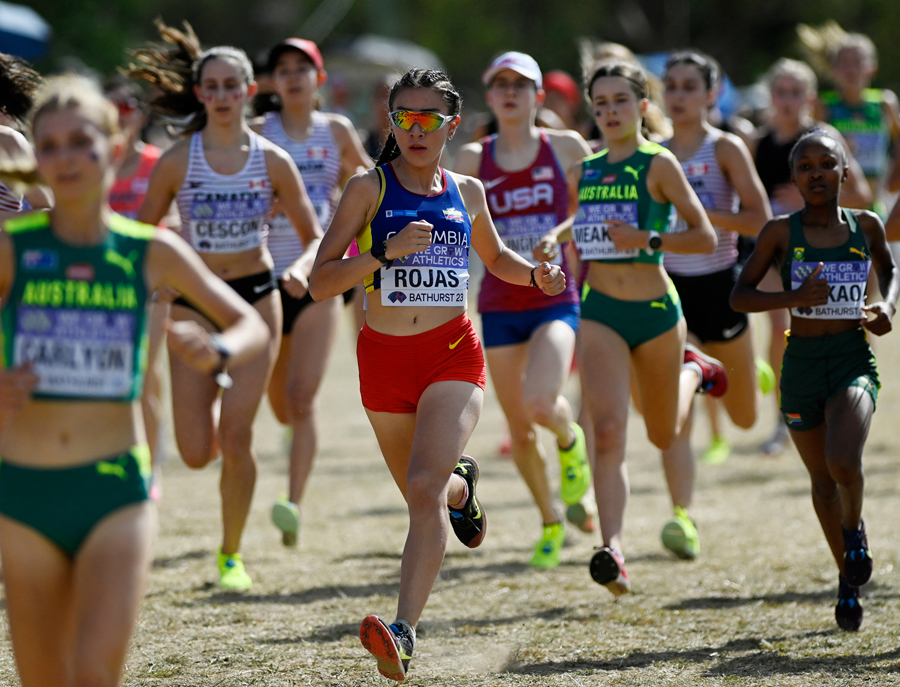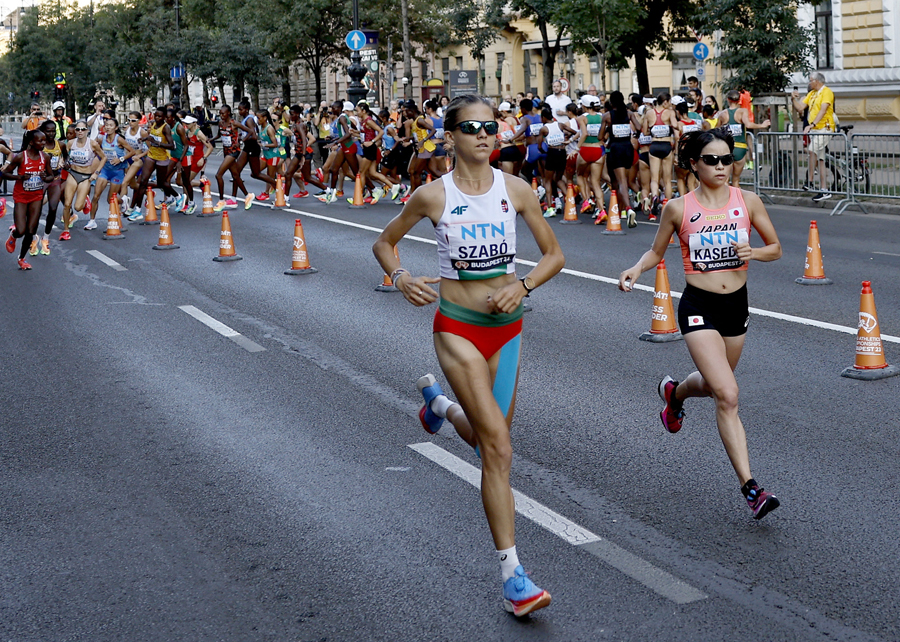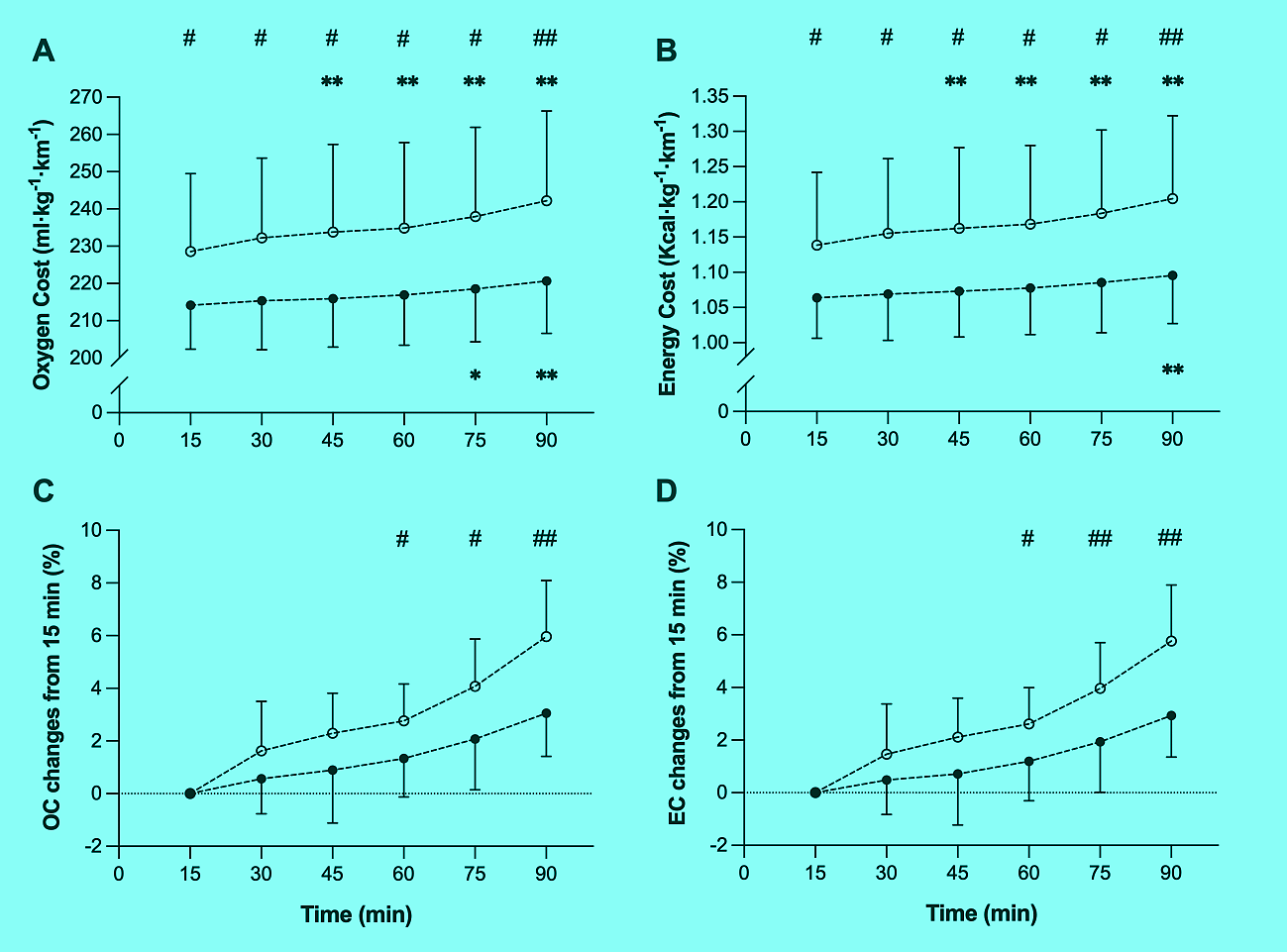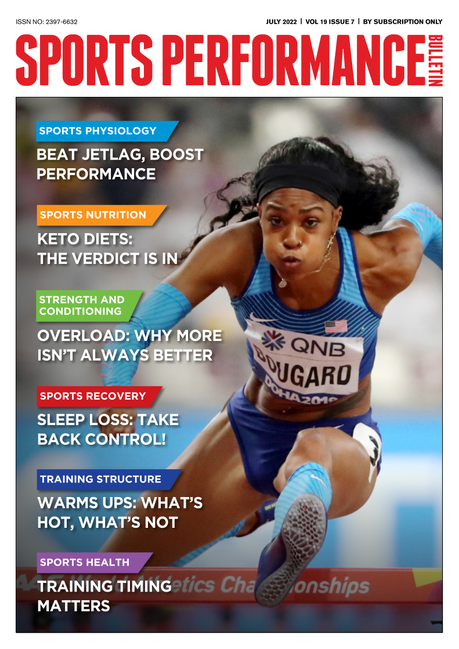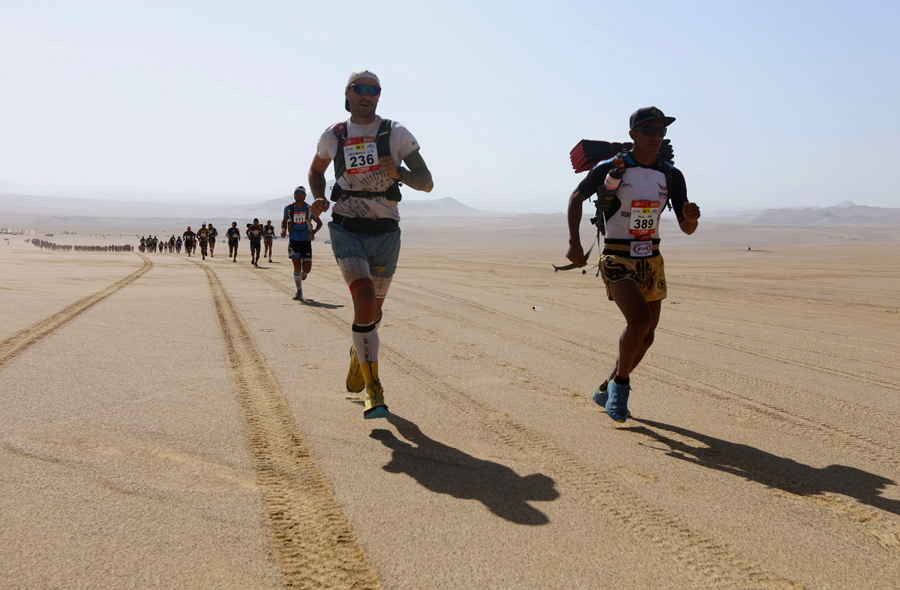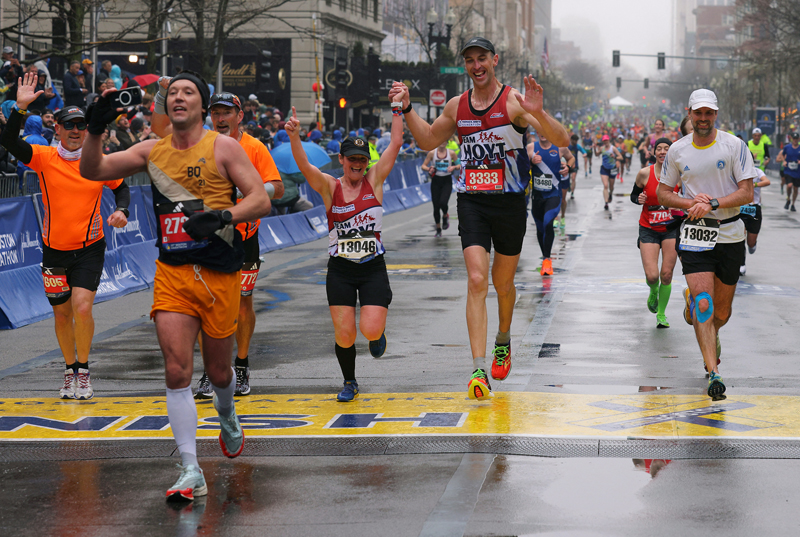You are viewing 1 of your 1 free articles. For unlimited access take a risk-free trial
Endurance and durability: better in the long run
What’s the best way to improve your endurance durability? Andrew Hamilton looks at definitive new research
For most of the time that scientists have been studying sports performance, it was assumed that over the course of a race or training session, an athlete’s endurance capacity was fairly fixed. In other words, the key determinants of endurance performance such maximum aerobic capacity (VO2max), lactate threshold and muscle efficiency (how much chemical energy is required by muscles to produce forward motion) were pretty much the same at the end of a race as they were at the beginning. However, one of the most intriguing and profound discoveries about human endurance over the past five years or so is that aerobic capacity, threshold and efficiency can and do change as fatigue sets in(1). In other words, they are not static.
Therefore, unlike your car engine, which turns in the same maximum mph, mpg and ability to work flat out regardless of whether it’s been running for five minutes, five hours or 50 hours, the VO2max, lactate threshold and economy of exercising muscles in your body tend to decline as exercise progresses. This quality is known as ‘durability’; when durability is high, the changes VO2max, lactate threshold and economy are relatively minimal and only set in after an extended period of exercise. Where durability is low, larger changes in these key performance markers are observed in a shorter period of time.
Why durability matters
It turns out (unsurprisingly) that a high level of durability is another key metric in how endurance athletes perform, with elite endurance athletes showing higher durability levels than amateur or recreational athletes(1,2). High durability - ie ability to resist physiological changes – has been shown to have clear performance advantages. For example, a marathoner with high durability is better equipped to resist inevitable performance deteriorating changes over the race distance, and therefore maintain performance capacity for prolonged periods of time. In line with this, lower heart rate drift (where it creeps upwards over time even though speed remains constant) in marathon running is associated with longer onset time to the start of drift and a faster relative marathon speed(3). Also, the greater heart drift commonly seen in amateur and recreational marathoners is associated with a decrease in running speed at the later stage of the race, as well as worse total time(4).
Durability and economy
Training to deliver the maximum amount to oxygen to working muscles (improving VO2max) and training the muscles to be able to use a large proportion of that oxygen for muscular energy while minimizing the accumulation of fatiguing lactate (improving lactate threshold) so that high work outputs can be sustained without the need to slow down and recover are critical for endurance performance. However, a third element of performance that is affected by durability is muscle economy.
Muscle economy is usually defined as the oxygen cost at a sub-maximal speed per unit of distance covered. Terms such as ‘running economy’ and cycling economy’ meanwhile describe the oxygen cost of running and cycling respectively per unit of distance covered. All other things being equal, a runner or cyclist (or any other endurance athlete) with better economy than his or her rival will perform better because he or she will be able to cover ground faster for the same oxygen cost – or to put it another way, can cover ground at the same speed for less oxygen cost and less fatigue.
Since the ability of the human body to absorb and deliver oxygen to working muscles is limited, economy is a major factor in determining endurance performance. High levels of running or cycling economy are major predictors of performance for runners and cyclists (see box 1). But we also know that this economy is not static but subject to durability changes. In theory than, a runner may have high level of running economy over 5km, but poor durability so that when he/she attempts a half marathon, that economy significantly declines during the race. This means more energy/oxygen needed per mile and more fatigue later on in the race, just when other aspects of fatigue – eg neurological fatigue – are also kicking in!
Box 1: Just how important is economy?
To give you an idea of the importance of muscle economy, one study of collegiate cross-country team members discovered that just two factors – maximum aerobic capacity (VO2max) and running economy - could account for 92% of the variance in performance during an 8000m running race(5). Also, running economy has been used as a key parameter (along with oxygen uptake figures) to predict marathon pace in elite runners(6).
Perhaps even more persuasive is another study in which researchers compared elite Eritrean runners with elite Spanish runners(7). Although both groups had very similar maximum aerobic capacities, the performances of the Eritrean runners were consistently better than those of the Spaniards. Testing on both groups revealed that the key physiological difference was the exceptional running economy of the African runners; at 21kmh (13.0mph), the Eritreans needed to consume just 65.9mls of oxygen per kilo per kilometre - compared with 74.8mls of oxygen for the Spanish runners (see figure 1). And it’s not just elite runners who benefit from improved running economy; research on recreational runners has also found that running performance is very closely related to running economy(8).
Figure 1: Spanish vs. Eritrean runners (O2 consumption per kilo per km at 21kmh)
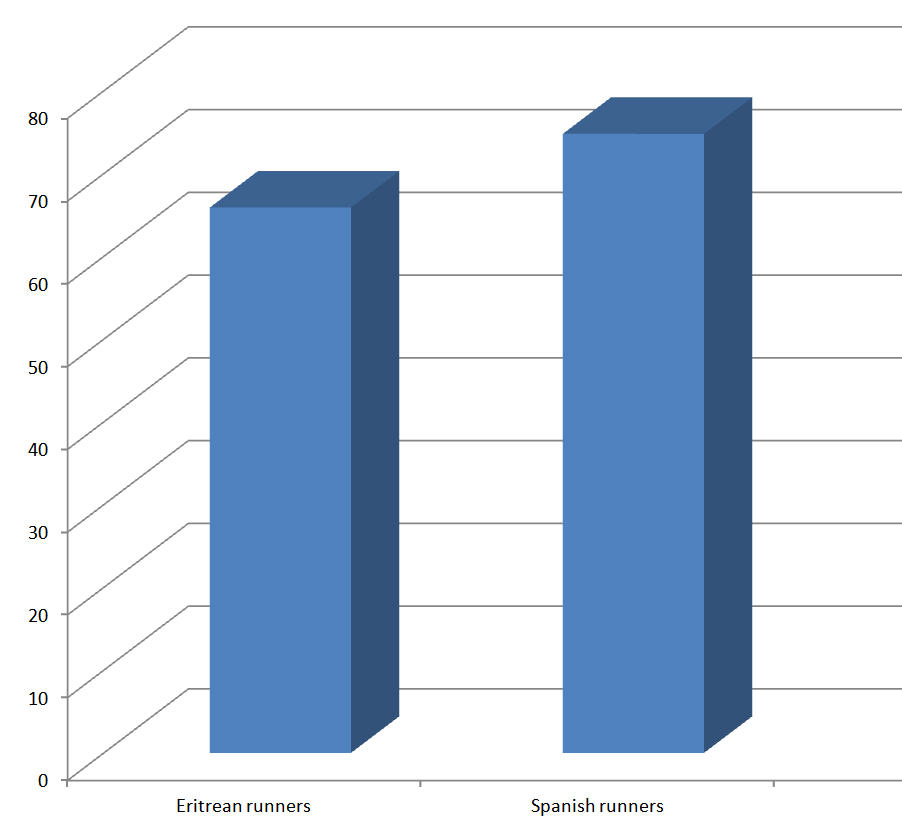
The reduction in economy as a result of durability impacts is not insignificant. Studies into this topic have observed a notable decline in running economy after relatively short endurance events – for example, 10km races or training runs lasting as little as one hour(9,10). However, the magnitude of the reductions in economy that are observed in various studies differ considerably, even over the same duration/distance. Research shows that for a 60-minute run duration, running economy can deteriorate by anything from zero to 9.5% - a huge disparity(11,12)! Likewise, running economy can plunge from anywhere between 5% and 26% at the end of a marathon compared to the start.
Training the durability of economy
If economy is an important metric of endurance performance, but one that is impaired during the course of a long-distance event such as a half or full marathon because of durability impacts, the obvious question to ask is why this durability-induced decline in economy is so variable, even when measured over the same distance. Also, how might this effect might be mitigated and are there any training recommendations that could help reduce the reduction of economy over the course of long race or training session, enabling athletes to retain as much of their high levels of economy throughout a race?
In the July issue of SPB, we looked at new research that touched on this topic. This research asked the following question: ‘Why do the most elite endurance athletes almost always perform a large percentage of their training volume at low-intensity - when that intensity of training provides little in the way of a training stimulus to an athlete with already high of endurance fitness?’ One of the theories discussed is that longer bouts of (lower-intensity) training may train the muscles to better maintain metabolic and physiological balance and prevent ‘metabolic drift’ and loss of efficiency during longer bouts of exercise(13). If this is indeed the case, the implication is that longer training sessions may play a role in helping to improve durability of economy during longer events – something that dovetails nicely with the specificity of training principle.
New research
While it seems intuitively correct that longer training bouts might help lessen durability-induced loss of economy during a longer race or event, there’s little actual hard data on this topic. One reason is that most athletes follow a personalized program, which means that the duration of the training sessions is highly variable, making comparisons difficult. Also, durability is known to be affected by impaired neuromuscular function; losses of economy as exercises progresses is likely to be strongly influenced by the accumulation of neuromuscular fatigue, which is highly variable from one athlete to another(14,15).
However, new research by a team of scientists from the School of Sport, Exercise, and Health Sciences at Loughborough University in the UK has investigated this topic to provide some answers(16). Published in the journal ‘Medicine and Science in Sports and Exercise’, this study compared the durability of running economy over the course of a 90-minute run in performance-matched athletes who had either previously been performing regular long training runs vs. those whose training sessions did not include long runs. In addition, the researchers looked at the decrements in neuromuscular capabilities during the 90-minute run in order to determine if and how this affected running economy.
What they did
Twenty-six male endurance runners participated in the study, all of whom met the following eligibility criteria: age 18-40 years, running at least 20km per week, had been able to run a 10K in less than 45 minutes in the previous six months, and free of any musculoskeletal injuries. To determine their training history, all the runners completed a 4-week training diary, which was cross checked with training data recorded via their personal GPS devices. Following these intial assessments, the runners were divided into one of two groups:
· Long-distance training (LDT) – in which runners had regularly (at least three times per month) completed continuous runs of 90 minutes or more over the past six months.
· Short-distance training (SDT) – consisting of runners whose longest runs were less than 70 minutes in the 6 months preceding the study.
Importantly, the runners in each group were pair-matched based on their best 10K performance over the previous six months prior to the experiment. This meant that the average performance and aerobic fitness levels of the two groups (39mins:10secs vs. 39:00mins:00secs and maximal oxygen uptakes of 56.6mls/kg/min vs. 58.9mls/kg/min for the LDT and SDT respectively) were pretty much the same, with only the maximum length of their training runs varying.
Lab visits
All the runners made two visits to the lab. In the first, they completed incremental treadmill runs during which gas analysis and blood sampling was carried out to determine each runner’s VO2max and lactate threshold. During this initial visit, the runners were also assessed for their countermovement jump performance (widely used to assess lower-body explosive power and neuromuscular performance in sports) and the peak force they could maintain in a static squat position.
On the evening before the second visit to the lab all the runners consumed the same standardized high-carbohydrate meal then fasted. This procedure was to minimize the influence of time of the day and dietary intake on the responses to the prolonged run. In the second testing session the following morning, the countermovement jump and squat force tests were carried out again, and after a treadmill warm-up, the runners ran for 90 minutes at a steady intensity, which was set so that each runner ran at their own lactate threshold. Oxygen consumption was measured at various points during the run (using gas analysis) while blood samples were also taken to measure blood lactate.
Of particular interest to the researchers was to see how oxygen consumption at this steady speed changed over the course of the 90-minute run; a rise in consumption as the run progressed would indicate that running economy was dropping because more oxygen was needed to maintain that pace. In runners with high durability of economy, this drop off in economy is lower than in runners with poorer durability of economy.
What they found
The key findings were as follows:
· Changes (declines) in running economy were seen across the 90-minute running trial in both groups. Crucially however, the changes occurred earlier and were larger for SDT (maximum training run length less than 70 minutes) runners than in the LDT (maximum training run length more than 90 minutes) runners. In the SDT runners, running economy declined by 6.0% (ie 6.0% more oxygen was needed to maintain the running speed after 90 minutes of running) whereas in the LDT runners, it declined by just 3.1% after 90 minutes (see figure 2).
· Isometric squat force (-19.4% vs. -12.2%) and countermovement jump power (-6.6% vs. +2.2%) decreased more in the SDT runners compared to the LDT runners. However, these changes were NOT correlated with running economy declines.
· A strong statistical correlation was found between running economy durability and the runners’ weekly longest run, with longer-duration longest runs correlated with a reduced decline in running economy. A similar strong correlation was also found with the runners’ weekly training volume, with higher weekly mileages being correlated to better durability of running economy.
Figure 2: Oxygen and energy consumption cost changes
Open circles = SDT runners. Solid circles = LDT runners. A = oxygen cost per kilo of body mass per km; B = energy cost per kilo per km. C and D show % changes from 15 to 90 minutes. Note the greater increase in oxygen and energy consumption in the SDT runners, indicating a greater loss of running economy and poorer durability of economy.
Implications for runners and other endurance athletes
This study provides concrete evidence that training programs containing longer-duration runs and greater total weekly mileages can help increase the durability of economy compared to programs with shorter maximum duration runs and lower weekly mileages. You might wonder if the LDT runners had better durability because their greater weekly mileages meant they spent more time training at near lactate threshold. However, an analysis of their pre 6-months training data shows there was no significant difference in time spent at lactate threshold between the two groups, which reinforces the notion that maximum training run length and weekly mileage is what really matters.
While the SDT runners seemed to be affected more by neuromuscular fatigue than the LDT runners, this didn’t correlate with economy declines. One likely explanation put forward by the researchers was that the greater decrease in neuromuscular function of the SDT runners may be due to their lack of familiarity with prolonged running; this group on average covered 18.3km during the 90-minute run – over 50% longer than their usual longest weekly run (12km). This was not the case for the LDT runners who covered similar distances in their weekly long run and during the 90-minute trials (19km and 19.4km, respectively).
If you are a runner or other type of endurance athlete, what are the implications of these findings? The clearest implication (and one that seems intuitive) is that in order to maintain your running, cycling, swimming etc economy over a certain distance, you should be training on a regular basis over that distance. For example, if your goal is to run a good half marathon or ride well in a 50km cycling time trial, you should include some training sessions over that distance – perhaps one every week to 10 days. If you’re training for a longer event such as a full marathon, this may be tricky (not many athletes can face a 26-mile training run!). But you should at least get quite close to it once every 10 days or so.
Another option therefore is to increase your total weekly training mileage, which also seems to improve the durability of economy. However, increase this too much and you may risk injury and/or burnout. One way of getting around this may be to re-structure your sessions so that your weekly mileage increases only a little or not at all, but with a larger emphasis on a longer longest run (or bike ride or swim etc). For example, if you’re training for a half marathon (13.1 miles) accumulating 30 miles per week with two 5-mile runs and two 10-mile runs per week, you may be better off switching to one long run per week of 14 miles then distributing your remaining 16 miles per week accordingly (eg 2 x 4 miles and 1 x 8 miles). If you do decide to increase your total weekly mileage and your longest training session falls short of your competition, it might be best to use your add some extra weekly mileage onto your longest training session rather than on your shorter ones, or by adding in extra sessions. However, any increase in this session length should only be very gradual – no more than 30% per month!
References
1. Sports Med 2021. 51, 1619–1628
2. J.Physiol. 2024 Sep;602(17):4113-4128
3. Sports Med 2022. 52, 2283–2295
4. Front. Psychol 2020. 10, 3026
5. J Sports Med Phys Fitness. 1991 Sep; 31(3):345-50
6. J Physiol. 2008 Jan 1; 586(1):35-44
7. Appl Physiol Nutr Metab. 2006 Oct;31(5):530-40
8. J. Sports Med. Phys. Fitness 2017; 57(9), 1111–1118
9. Eur J Appl Physiol. 1991;62(6):385–9
10. Eur J Appl Physiol. 1998;77(4):366–71
11. Eur J Appl Physiol. 2007;100(6):653–61
12. Int J Sports Med. 1995;16(5):309–13
13. Issurin VB, Dreshman R (2012) ‘Alternative approach to training for endurance athletes: block periodization’. In: Mujika I (ed) Endurance training—science and practice. Iñigo Mujika S.L.U., Vitoria-Gasteiz, Basque Country
14. Med Sci Sports Exerc. 2024;56(11):2230-40
15. Scand J Med Sci Sports. 2024;34(5):e14637
16. Med Sci Sports Exerc. 2025 Aug 29. doi: 10.1249/MSS.0000000000003840. Online ahead of print
Newsletter Sign Up
Testimonials
Dr. Alexandra Fandetti-Robin, Back & Body Chiropractic
Elspeth Cowell MSCh DpodM SRCh HCPC reg
William Hunter, Nuffield Health
Newsletter Sign Up
Coaches Testimonials
Dr. Alexandra Fandetti-Robin, Back & Body Chiropractic
Elspeth Cowell MSCh DpodM SRCh HCPC reg
William Hunter, Nuffield Health
Keep up with latest sports science research and apply it to maximize performance
Today you have the chance to join a group of athletes, and sports coaches/trainers who all have something special in common...
They use the latest research to improve performance for themselves and their clients - both athletes and sports teams - with help from global specialists in the fields of sports science, sports medicine and sports psychology.
They do this by reading Sports Performance Bulletin, an easy-to-digest but serious-minded journal dedicated to high performance sports. SPB offers a wealth of information and insight into the latest research, in an easily-accessible and understood format, along with a wealth of practical recommendations.
*includes 3 coaching manuals
Get Inspired
All the latest techniques and approaches
Sports Performance Bulletin helps dedicated endurance athletes improve their performance. Sense-checking the latest sports science research, and sourcing evidence and case studies to support findings, Sports Performance Bulletin turns proven insights into easily digestible practical advice. Supporting athletes, coaches and professionals who wish to ensure their guidance and programmes are kept right up to date and based on credible science.
